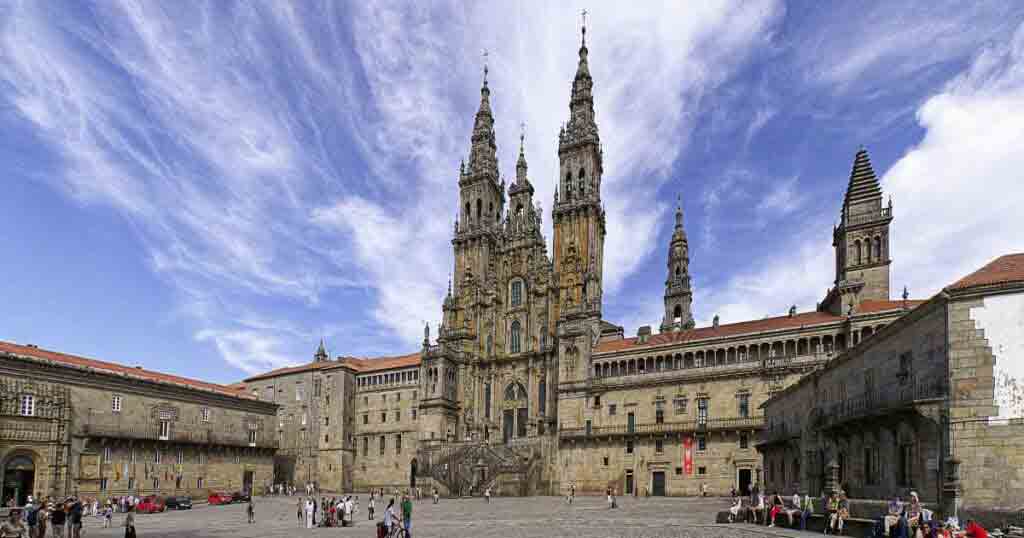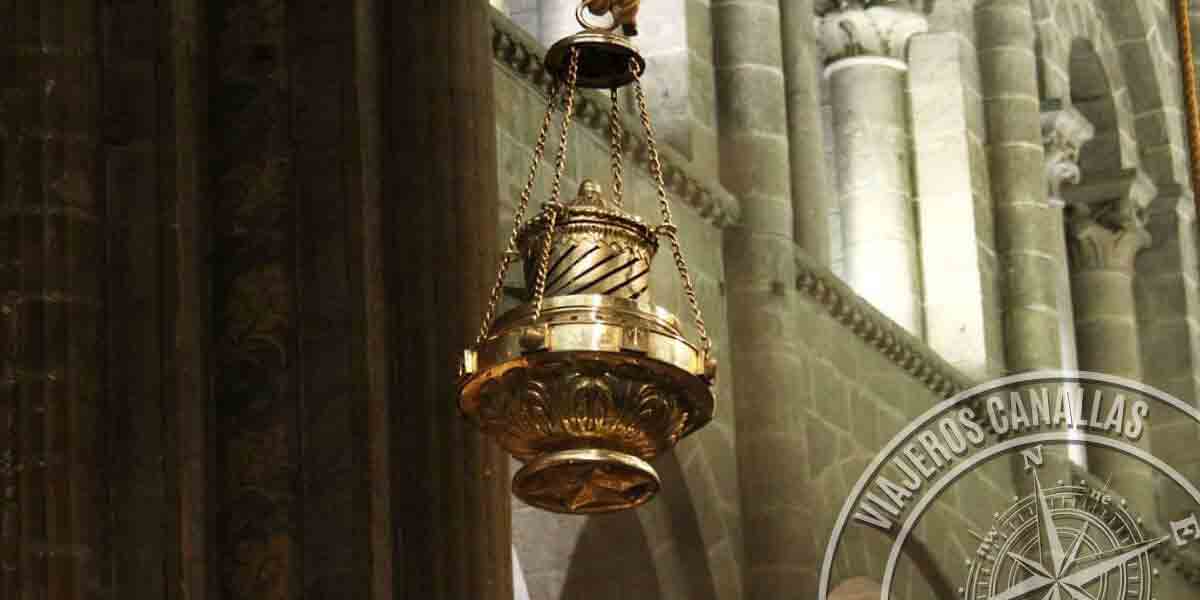Get to know the botafumeiro of the Santiago Cathedral
Welcome to our post where we will explore one of the most fascinating treasures of the Cathedral of Santiago de Compostela: the Botafumeiro. This majestic censer is not only a visual masterpiece, but also has deep roots in the rich history and traditions of this sacred place.

What is the botafumeiro and where is it located?
The Botafumeiro de Santiago de Compostela is a famous giant censer that hangs in the cross nave of the Cathedral of Santiago de Compostela, in Galicia. Its name comes from the Galician "botar fumeiro"which means "Smoke and mirrors. Throughout history, the Botafumeiro has been a distinctive and symbolic element in the celebration of mass in the cathedral.
The censer, which weighs around 80 kilograms, swings from side to side at an impressive height, filling the cathedral with the aroma of incense. The handling of the Botafumeiro requires a team of tiraboleiros, people in charge of handling the ropes and controlling its movement.
History of the botafumeiro
The history of the Botafumeiro dates back to the 11th century. Although the details of its origin are not known with certainty, it is believed to have been created to counteract the odours produced by the large number of pilgrims arriving at the cathedral, many of whom had travelled long distances. In addition to its practical function of purifying the air, the Botafumeiro was also used to honour the pilgrims and to demonstrate the wealth and splendour of the cathedral.
Over the centuries, the Botafumeiro has undergone several modifications and restorations. In the 19th century, the archbishop of Santiago, Plácido Zuloaga, commissioned a restoration and reconstruction of the censer, which had suffered damage over time. During this restoration, a mechanism of pulleys and counterweights was added, which allowed it to increase its size and perform wider oscillations.
Nowadays, the Botafumeiro is one of the most popular attractions of the Cathedral of Santiago de Compostela and is used on special occasions, such as the celebrations of the Compostela Holy Year or important liturgical events, which we will tell you about below.
When it can be seen in operation
There are only 12 annual masses in which the Botafumeiro is always in operation. These are the so-called solemn masses. These are:
- The Epiphany of the Lord (6 January)
- Easter Sunday (the date of celebration is not fixed)
- Ascension of the Lord (40 days after the Resurrection)
- Pentecost (50 days after the Resurrection)
- Anniversary of the Battle of Clavijo (23 May)
- Day of the St. James the Apostle (25 July)
- Assumption of Our Lady (15 August)
- All Saints' Day (1 November)
- Solemnity of Christ the King (variable date, between 20 and 26 November)
- Immaculate Conception (8 December)
- Christmas (25 December)
- Translation of the remains of St James the Apostle (30 December)
The decision to operate the Botafumeiro is subject to the discretion of the ecclesiastical authorities and may depend on several factors, including the nature of the event, the liturgical importance and the availability of the tiraboleiros, the team in charge of handling the censer. This action does not have a fixed cost but is generally priced at around €450.
To request the use of the Botafumeiro, a specific procedure must be followed:
Contact with the Cathedral:
Those individuals or groups interested in witnessing the use of the Botafumeiro should contact the Pilgrimages Office of the Cathedral of Santiago de Compostela and the responsible ecclesiastical authorities.
Formal Application:
A formal request may be required indicating the reason for the request, the proposed date and time, as well as any additional relevant information.
Approval and Confirmation:
The application will be reviewed by the ecclesiastical authorities, and if approved, official confirmation will be provided. Approval may depend on the availability of tiraboleiros and other logistical factors.
As policies and procedures may change, it is recommended that you contact the Cathedral of Santiago de Compostela or the responsible ecclesiastical authorities directly to obtain the most up-to-date information on the availability and procedure for the use of the Botafumeiro.
Conclusions
The botafumeiro of the Cathedral of Santiago de Compostela represents much more than a simple liturgical act. It is a symbol of faith, tradition and devotion, rooted in the history of the Camino de Santiago and in the cultural identity of Galicia. Its imposing presence and its rocking ritual evoke the very essence of the spiritual journey that thousands of pilgrims undertake every year to the tomb of the apostle St. James.
